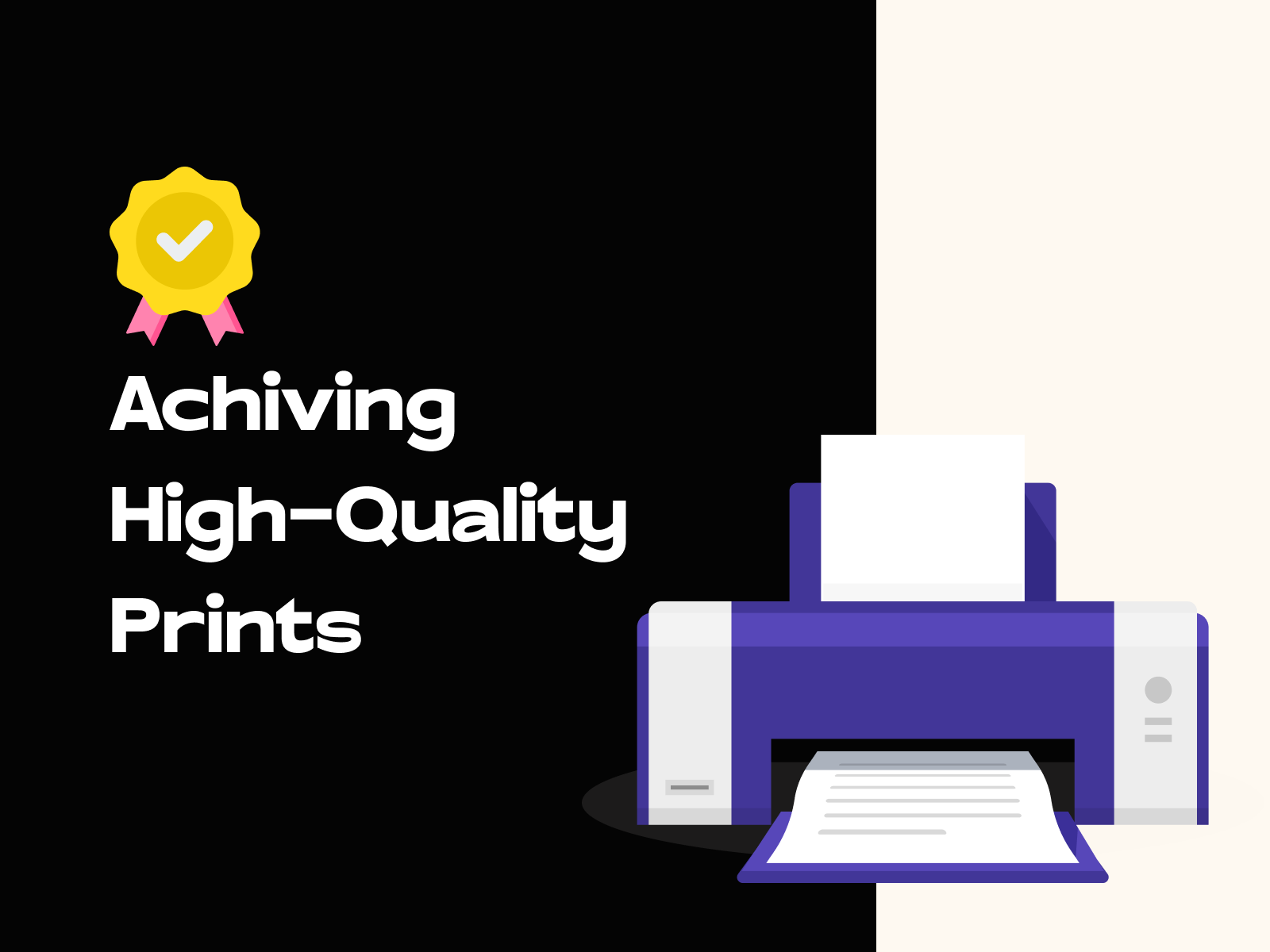High-quality prints can make or break your next project. All the thought and attention you put into the design before printing can become less impactful if the results are lower quality than expected. These factors are significant contributors to high-quality printing.
Font Choices
Most people have seen printed items that are hard to read, even when holding them close to their eyes. Poor decisions about fonts usually cause this problem. A widely recommended best practice is to choose sizes of 10-12 points, but the specifics vary depending on the selected option. Script or novelty fonts are often much harder to read than those with simpler, familiar shapes.
Only use script for headlines or other brief parts of the text and never the body copy. Experiment with font sizes to see how larger words would assist with readability.
Serifs — the additional strokes or “feet” of a letter’s main lines — can make words more difficult to read, although exceptions exist. You must also pay attention to the spacing between words, letters and lines. People will have trouble reading the content if these things are too close together, making it difficult to get high-quality printing results.
Color Profile
A color profile is a numerical model that standardizes how the hues look across different screens. CMYK, RGB and Pantone are the three generic color modes designers use, but there are specialty options within those choices. For example, Apple has exclusive RGB profiles, as do some design programs.
Knowledge of color profiles will help you make better decisions about high-quality printing. You’ll need to use a different one when printing a design versus making something people will only view on screens. The CMYK color profile is the best option for printed designs.
However, try the Pantone color profile if your project requires brighter shades than CMYK will provide. It’s also well-suited for printing. Conversely, RGB is the ideal choice for digital creations people will only see on screens. Fortunately, converting from RGB to CMYK is easy, and many print shops offer that service.
Quality Control Checks
High-quality printing can only occur when people take the time to verify the machinery and project data will work as expected. Checking that the printer has sufficient ink or paper levels is a good first step. However, employees at most reputable print shops go much further. Some verify at least a dozen factors — from image sizes to printhead cleanliness — associated with the printer and client’s design.
Verifying these things are in order before printing saves time and money while increasing the chances of a positive result. Some inspection and verification software types can find and flag errors in seconds, but using it should be the last step. People who take time to notice and avoid mistakes collectively elevate print quality.
People must also examine bleeds and margins for their printed designs. These areas around the edges accommodate printing variations or the need to cut printed pieces. Bleeds are the areas extending beyond the print’s final size and margins are the interior gaps between the content and the document’s edges.
One way to look at quality control is that rushing to start printing your design may raise costs and extend time frames. Being more detail-oriented takes a bit more time, but it’s the best approach when people prioritize high-quality printing.
Resolution
The resolution of a print project impacts image richness as a measurement of pixels per square inch. However, something that complicates matters is that the optimal resolution is much lower for online content versus printed materials. Some people may make the mistake of using the same for both kinds of projects, which will reduce print quality.
Another thing to consider is that your printed project may have multiple images in the design, such as with posters. A best practice in such cases is to have a resolution between 150 and 300 dots per inch for each image.
Material Characteristics
People don’t always consider how the paper or other material associated with a printed project can affect results. For example, paper with a low opacity allows more light to come through it, which could impact how viewers see the design and its words or colors. Low opacity can also make text on the reverse part of a double-sided print more visible.
Paper brightness concerns how well the material reflects light. Higher brightness could create more contrast, such as if someone prints dark text on a white poster.
There are other things to consider if your printing project involves putting the design on fabric, such as a T-shirt. For example, screen printing is a popular and widely available option. However, it works best on geometric shapes with relatively few colors.
Digital printing is better if the design requires putting photos onto a shirt. People will wash clothing dozens of times while owning it, so think about how fading fabric colors could affect how your design looks over time.
The printing type also affects how the design feels on the shirt’s surface. Digital printing can achieve a lightweight and soft look while giving the garment better airflow due to less ink accumulation.
Proofing
A proof shows what your project will look like once printed. However, there are both hard and soft proofs. A soft one is a digital file, such as a PDF, that shows you appearance-related details. You can use it to catch typos or notice that your chosen colors look different than imagined.
A hard proof is a printed sample, which you need when considering paper characteristics and margins. They are also important for checking how everything looks for a project that needs folded paper, such as brochures. Is the text centered on each panel after you make each fold? If not, make the necessary changes and check another proof before proceeding.
Evaluating proofs is the best way to ensure your printed design will look as anticipated. Hard and soft proofs give you the final opportunities to assess and tweak things.
High-Quality Printing Happens With Careful Approaches
A high-quality print does not happen by accident. Some people get lucky and like the results despite putting little or no thought into them, but such outcomes are unlikely. Considering these factors will make getting beautiful results more likely. High-quality prints get noticed, so paying attention to these things can boost your business and brand.
Eleanor Hecks is the founder and managing editor of Designerly Magazine. She’s also a web design consultant with a focus on customer experience and user interface. She lives in Philadelphia with her husband and dogs, Bear and Lucy. Connect with her about marketing, design and/or tea on LinkedIn.








 Book a Meeting
Book a Meeting